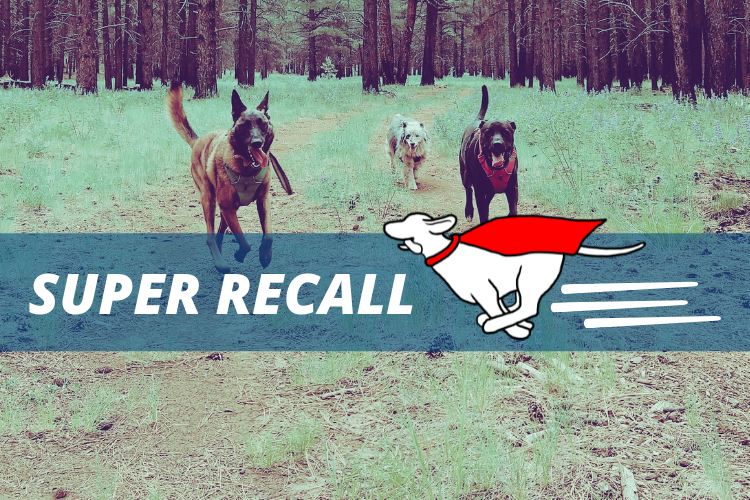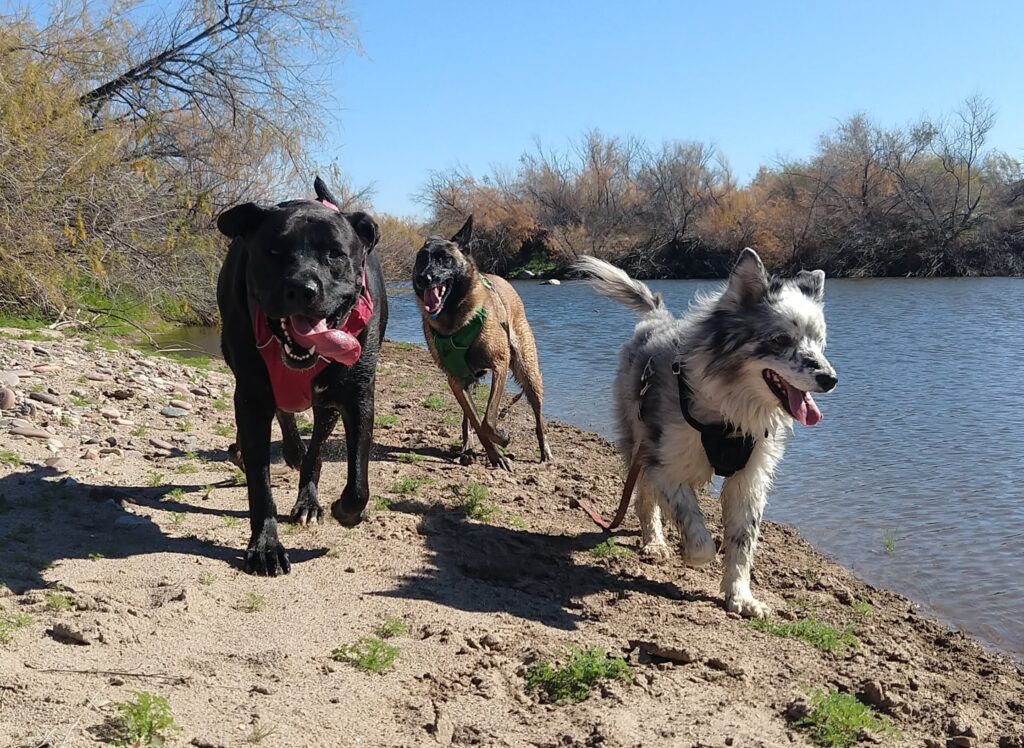Course description
Super Recall

Get your dog to pay attention to you in public and reliably come when called, with just 15 minutes of training per day
If you’ve taught your dog to come when called… but can’t get them to do it when it actually matters? This one’s for you.
If your dog:
- Only listens if you have a treat in your hand
- Does great in formal training sessions, but blows you off in “real life” situations
- Behaves perfectly at home, but acts like they can’t hear you outside the house
- No longer responds to the come command, even though they were amazing at it when you first taught it to them
You’re not alone.
The come-when-called cue (aka “the recall”) can be one of the trickiest things to get right. It’s a relatively easy command to teach, but it’s hard to train a dog to the point where they’ll listen when it really counts.
That’s why we made this course. To take this big, daunting process and break it down into a simple plan that anyone can follow, even if you’ve never trained a dog to do anything before.

You'll learn how to:

Get your dog to LOOOVE to come running when called

Handle distractions (and even put those distractions to work for you)

React if your dog doesn't listen

Systematically increase distractions and distance to achieve a recall that works when you need it

Turn the recall cue into your dog's new favorite word
You know how dogs usually have some magic phrase that really gets their attention, like “wanna go for a walk,” or “dinner time,” or “do you want a treat?”
They hear this and they go “HELL YES I want a walk/dinner/treat!”
Wish you could get them to feel that way about their recall cue?
You don’t have to wish anymore.
With this course, you’ll learn how to teach your dog a recall cue they’ll say “hell yes” to: a SUPER recall.

THE DETAILS
Here's what's included
- A step-by-step training plan. We'll go from the very beginning, all the way to training off-leash in distracting environments.
-
Video demonstrations using real training footage. The course is divided into six lessons. Each lesson gets a “lecture” video that introduces all the important concepts, plus at least one tutorial video that shows you how to perform each exercise.
The tutorials use real-life training footage of our dogs, River and Hazel. You’ll watch them go from their very first baby steps of recall training, all the way to advanced training. -
A simple “leveling-up” system. How do you know exactly when to move on to the next exercise? We'll show you!
With an easy-to-follow test, you’ll always know when you’re ready to level up, when you need to stay at your current level, and when you need to go back a level.
This is a self-study course. So you can dive right in and proceed at your own pace.
Achievement badges!

Earn level badges as you work through the course. With this feature, we aim to give you a fun way to track your progress and celebrate all your wins along the way.
This course is for you if you want:

- To stop worrying about what happens if your dog escapes their leash or darts out the front door. Wouldn't it be nice to have a dog who just comes right back to you when you call them, no drama, chasing, or heart attacks required?
- To have more fun and freedom with your dog. A dog who pays attention to you and comes when called is a dog who can go on more adventures.
- To build your bond with your dog and get them to WANT to listen to you. The training techniques in the Academy are dog-friendly and teach your dog that you are awesome and fun to be around.
- To get your teenage dog to pay attention to you. Adolescent dogs in particular have a hard time listening. This course demonstrates how I got my young dog River to recall, even at the height of her stubborn teenage phase.

ready to get started?
Join this course by signing up for an Academy membership
Here's what you get when you join:
- Super Recall
- All of our other courses and workshops, including...
- All ten Puppy Survival School courses
- Help from trainers Erin and Jake in our private forums
- Twice-monthly live Q&A sessions with the trainers on Zoom
- The ability to send us clips of your dog's behavior to get our insight and advice
- All special events and bonus content
Choose your payment option below, and take your first step toward a reliable recall

The 60 Day Money Back Guarantee
We offer full refunds on monthly and annual All-Access Pass memberships. If you decide the Academy isn’t for you, send us an email within two months of purchase and we’ll refund 100% of your payment, no questions asked.
FAQ
Super Recall teaches you the protocols for gradually improving your recall to higher and higher difficulty levels throughout your dog’s life. So it’s open-ended, and there is no set “graduation” point.
But I can try and fit this into more conventional dog-training-class language. So if you train about five days a week, 15 minutes per day, you could have:
- A solid beginner-level recall in 4-6 weeks.
- An intermediate-level recall in 8-12 weeks.
- An advanced-level recall in six months to one year
Your results may vary, of course. How long things take will depend on your dog’s age (puppies take longer to achieve an advanced level), how often you train, any behavior issues your dog has (this course won’t solve reactivity or aggression issues), etc.
You can get started on the first lesson with no equipment except some delicious training treats.
Eventually, you will need:
- A harness or regular buckle collar. For recall training, avoid any type of special “training” collar like prong collars, choke chains, head halters etc.
- A long-line. This is a training leash at least 6m/20ft long, preferably longer.
- A wearable treat pouch. This is optional, but highly recommended when you start training out in the world and don’t have a convenient place to stick your treat container. Unless you don’t mind stuffing smelly dog treats in your pockets.
Thanks for asking! Our training is reward-based. All the training exercises in Super Recall fall into two very broad categories:
1. Positive reinforcement. We teach the dogs exactly what behaviors we want, and strengthen those behaviors with a wide variety of reinforcers.
2. Classical conditioning. You’ll learn how to condition an involuntary emotional response of “HELL YES!” when your dog hears the recall cue.
Remember Pavlov’s dogs, who automatically started drooling when they heard the dinner bell? That’s classical conditioning.
We don’t use: Punishers like collar corrections, leash jerks, spray bottles, loud noises, etc. Or ecollar training of any kind. To put it in nerdier terms, we don’t use positive punishment or negative reinforcement.
This is a self-study course. When you sign up, you’ll get immediate access to the whole thing, and you can proceed at your own pace. Each lesson consists of a video, and most have accompanying text.
You can go back and rewatch previous lessons at any time.
If you ever need help or tips for your specific situation, you can post questions in our forums or attend our twice-monthly live group coaching sessions.
To access the program, you’ll sign in to 3LostDogsAcademy.com with the username and password that you create upon checkout. The site is accessible from any internet-enabled device, like your phone or computer.
When you join, there will be an orientation video to show you the ropes.
Sure! Send an email to contact@3lostdogs.com and I will personally get back to you. – Jake

